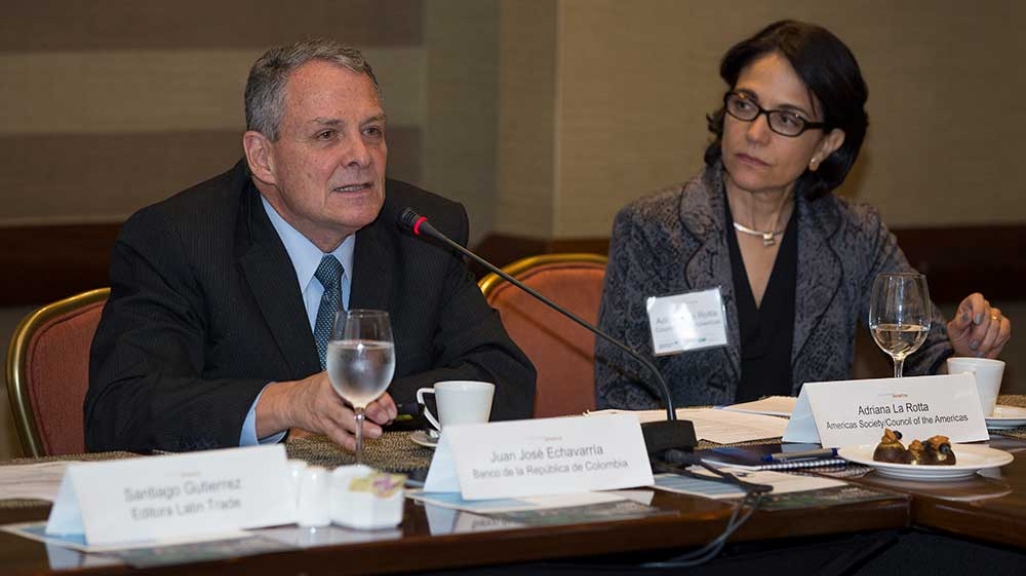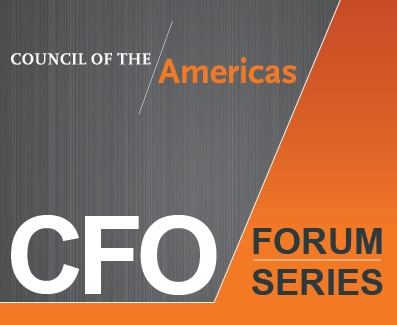Summary: 2017 CFO Forum in Bogotá
Summary: 2017 CFO Forum in Bogotá
Council of the Americas’ forum in Bogotá explored how CFOs should make sense of regional economic conditions in a volatile context.
Global liquidity is still high, and that, in turn, creates a volatile environment where relatively small changes on interest rates produce large swings in capital flows and, in turn, on exchange rates. That was a key take away from June’s Council of the Americas CFO Forum in Bogotá, Colombia.
Although not at pre-crisis levels, the world is still a liquid place. The Bank of International Settlements publishes an indicator of global liquidity, which measures total international bank claims as a percentage of global GDP. To get an idea of where we stand now, in 1980 this indicator was 14.6 percent. It consistently rose to a 67.2 percent peak in the first quarter of 2008, and then fell to 41.5 percent by year-end 2016. The current figure is almost three times that of 1980, and it's bigger than any of the results recorded in the period from 1980 to 2000.
That should be considered a key element for CFOs trying to make sense of the current regional economic conditions: Capital flows will still be volatile—it's a fact of life. And it’s relevant because economic performance depends, more than many analysts would want to accept, on terms of trade and on international financial flows.
Country growth depends on commodity prices, on global interest rates—especially those in the United States and EU—and on investors' appetite for risk.
There is some room for local government action, but its effect can be either boosted or totally offset by international forces. To put it bluntly, more political regimes will be ousted or changed by China decreasing its demand for commodities than by locally generated conditions.
Trends that can aid in sketching global conditions:
- China is projected to grow at 6.6 percent in 2017 and 6.5 percent in 2018. There will be domestic pressure to allow larger investments abroad.
- There will be a slight increase in non-oil commodity prices.
- Oil prices will be capped at nearly their current level by shale oil and gas production in the United States.
- Interest rates in the United States will have two increases this year, with both moderate enough to leave room for further appreciation of the dollar.
- The threat of a global wave of protectionism seems weakened by new perceptions on the inability of the U.S. government to pass trade reform laws through the U.S. Congress. However, protectionist sentiment could still hinder economic growth.
These conditions will foster a return of capital flows to emerging markets, and will support a slight recovery of Latin American economies in 2017. Chile and Colombia will both grow 2 percent and Mexico 1.7 percent. Brazil and Argentina will gradually come out of their recessions. Inflation will be moderate in most Latin American countries, perhaps with the exception of Mexico, where currency depreciation and the increase in gasoline prices will place a heavy burden on consumer prices.
This summary was prepared by Latin Trade.










